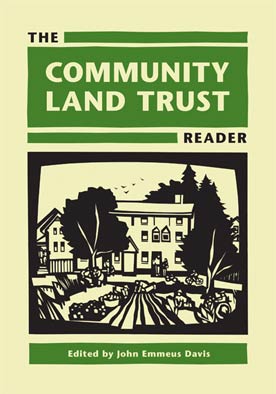In July 2009, before health care dominated the news, President Obama called for the creation of an agency — an independent one — that would protect consumers from predatory banking practices. Fast forward to a year later, and that independence appears to be at the very heart of the opposition to the creation of that entity, formally called the Bureau of Consumer Protection. Rep. Frank has carried the consumer protection torch in the House, offering up HR 3126 to create it. Myriad changes to the bill have occurred since, with the latest Senate version now slated for a floor vote. While this sit-down interview occurred in February in his DC office, and much in the bill has changed, Rep. Frank discussed the bill, as well as the state of the housing market and NSP, and offered up a decided challenge to advocates to better convey their individual messages on Capitol Hill.
Shelterforce: President Obama’s original proposal for a Consumer Protection Financial Agency involved relocating fair lending and consumer protections — including CRA — from bank regulatory agencies into an agency that would be charged with enforcing these laws. The Dodd bill in the Senate does not address CRA and proposes to place a consumer protection agency within the Federal Reserve. What happened?
Barney Frank: We didn’t see Dodd fighting to get anything out there in terms of CRA. I think that’s part of the answer. Also, CRA really deals more with communities than individuals. We do have in there the individual alien discrimination fair lending segment.
The other problem is that I think CRA, as it is, isn’t nearly strong enough. And we want to expand CRA, both as to financial institutions that are not now covered by it and by the penalties for non-compliance.
If Dodd can get the CRA thing through, we’ll negotiate, but I’m not hopeful, and don’t expect to see a separate bill because if he can’t get it passed as part of this, how’s he going to get it passed as a separate bill? I mean, there’s no magic to that — he just doesn’t have the votes to get it through the Senate because of opposition from all Republicans and some Democrats. That’s the problem. I know Chris is trying hard to do it, but the indication we get here in the House is that [the opposition] really mobilized against it over there.
As for the House bill I sponsored, one of the reasons I cut the CRA out is that I worried I would have lost some of the community banks, and it would have been a problem for us there. And finally, it’s not a case where we can’t win it now — but that we can’t win it politically in the foreseeable future.
Can you talk a little bit about the composition of a CFPA? Consumer advocates have voiced strong opposition to the fact that the Federal Reserve Board would have control over a CFPA budget, and that a Financial Stability Oversight Council, a body of regulators, can veto consumer protection measures with a two-thirds vote.
But again, these are compromises necessary to get it passed.
What led up to your proposal to abolish Fannie Mae and Freddie Mac? Where does that proposal stand?
Well, it came from the fact that Fannie and Freddie collapsed and cost a lot of money, and the hybrid form of a public mission and a stockholder collaboration doesn’t work well. So, what we want to do is reorganize this and go forward. We have to figure out what’s the role of the Federal Housing Administration, Ginnie Mae, Fannie Mae, Freddie Mac, and the federal home loan banks.
And there are really several functions here. One is that we are pushing to get funded the Low Income Housing Trust Fund. That’ll take care of the low end. Then, you’ve got to kind of shallow subsidy that so it achieves the goals of Fannie Mae and Freddie Mac. I really want that to survive and we’ve got to figure out where best to put it. Then, you have the function of just liquidity for the secondary mortgage market. We’ve got to figure out who does that.
But you maintain that government-sponsored enterprise is not the way to go in this case.
Right. The model of a private shareholder corporation with a public mission doesn’t work. It collapsed. And we want to preserve all the functions but figure out what is the best way to structure it.
And you have said it’s the future of housing finance, going forward.
I have. So, it’s all those together, Ginnie Mae, Fannie Mae, and there’s the shallow subsidy.
And the deep subsidy, what would finance that?
Well, the administration is working on it right now. We’ll get started a billion-dollar-a-year trust fund. In the near term, I’d like to see it get started with TARP money.
And as far as access to affordable housing, and to fulfill the mission of access to affordable housing, how would that be preserved? We have the billion-dollar-per-year trust fund serving as the deep subsidy, but what form will a shallow subsidy take?
Nobody’s really come up with the form, but it is a function that will be done. It does not make sense to advertise as part of a private shareholder corporation to get attention there. And we’ve asked — the administration is working on this.
In my view, Fannie and Freddie did too much homeownership and not enough on the rental end. I think you do people no service by pushing poor people into homeownership that they can’t handle, and that was one of my gripes. But, that said, we’re going to separate out the function of providing liquidity for the secondary mortgage market in general and some kind of intermediate level of subsidiary.
And how you best do that is what we’re thinking about. Can it be all done with the FHA and Ginnie Mae? Probably not. You would need some new public entity. FHA and Fannie and Freddie now are carrying a lot of the load, and we want to lose that when it’s restructured.
Are you thinking of restructuring FHA from the ground up?
No. We’re not going to restructure FHA. We don’t have to restructure Ginnie Mae. But both Fannie Mae and Freddie Mac will be restructured. They’ll be separated out, but we just don’t know what the functions will be and we have to now decide how to deal with it.
Could you see Fannie and Freddie being total stock companies?
You’re looking for an answer to important questions before we’ve had time to talk about it. I don’t understand that. Also, you have to get Fannie and Freddie out of your mind. Fannie and Freddie both now are amalgams. They do both some level of subsidy, and they’re a private shareholder company.
So no, I do not see any possibility of them being a private company. I mean, what would they do? There’s total nationalization and total privatization. Again, separate out from some kind of public utility. We do know what the functions we want them to serve are. As I said before, we need some level of intermediate subsidy, some level of secondary mortgage market liquidity, some kind of stand-by capacity in case of emergency, and figure out the best role for Home Loan Banks. How much of the public shallow subsidy to be taken over from Fannie Mae by FHA and Ginnie Mae is yet to be seen, but we’re going to have serious discussions about all of that. We’ll begin funding the trust fund with TARP money or and we’ll find other ways to do that.
For example, if you get a private company doing liquidity in the mortgage market, we may go back to what we originally talked about, which is some of the profits that are generated by that would be given over to the Low-Income Housing Trust Fund. I didn’t want to increase the goals, or burden, on Fannie and Freddie. It’s just too complicated with them being private companies. They can make money and reappropriate some of that profit and put into the Affordable Housing Trust Fund.
Depending on how we work this out, that model may occur. You know, the Federal Home Loan Bank already has an affordable housing program and we may be able to repurpose that housing finance system so there will be some entity generating sufficient profit that we can take some of that and put it into an affordable housing trust fund.






Comments